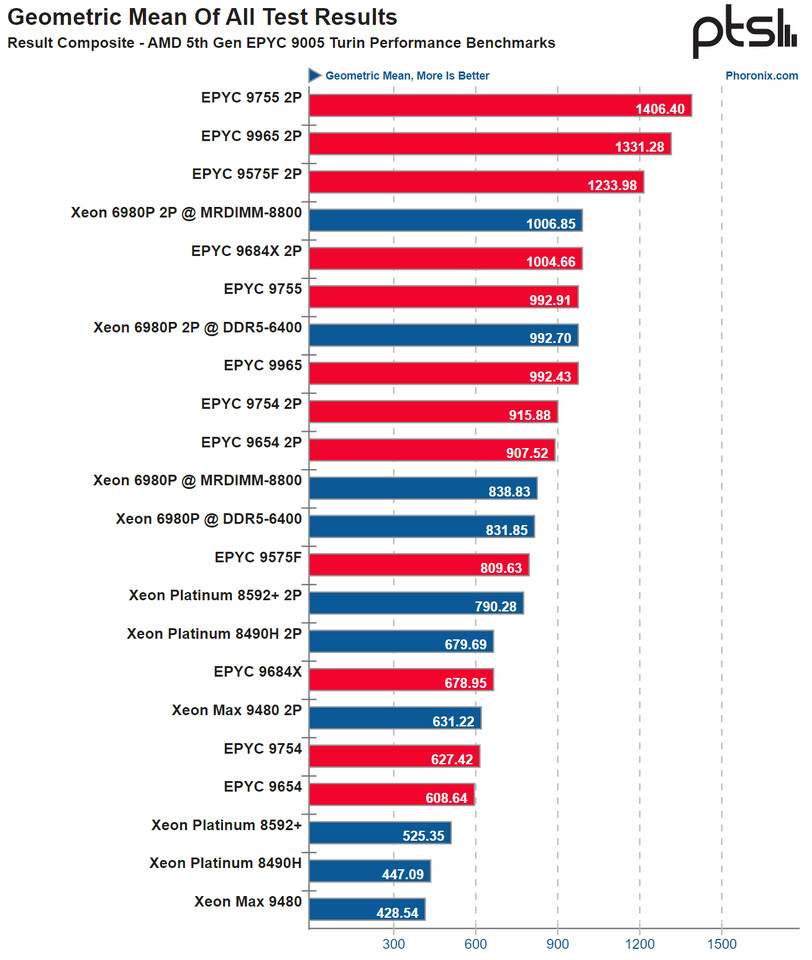AMD Unveils Latest EPYC Processors
AMD has introduced its newest EPYC processors, codenamed "Turin," which feature Zen 5 and Zen 5C dense cores. Testing conducted by Phoronix has shown significant advancements in performance, efficiency, and value. The new lineup includes the EPYC 9575F (64-core), EPYC 9755 (128-core), and EPYC 9965 (192-core) models, all demonstrating impressive capabilities across various server and HPC workloads.
In benchmark tests, a dual-socket configuration of the 128-core EPYC 9755 Turin outperformed Intel's dual Xeon "Granite Rapids" 6980P setup with MRDIMM-8800 by 40% in the geometric mean of all tests. Surprisingly, even a single EPYC 9755 or EPYC 9965 matched the dual Xeon 6980P in expanded tests with regular DDR5-6400. The EPYC 9755 showed a 1.55x performance increase over its predecessor, the 96-core EPYC 9654 "Genoa," while the EPYC 9965 surpassed the dual EPYC 9754 "Bergamo" by 45%.
These performance gains come with improved efficiency. Despite a moderate increase in power consumption, the performance improvements have resulted in better overall efficiency. For example, the EPYC 9965 used 32% more power than the EPYC 9654 but delivered 1.55x the performance. Power consumption remains competitive, with the EPYC 9965 averaging 275 Watts (peak 461 Watts), the EPYC 9755 averaging 324 Watts (peak 500 Watts), and Intel's Xeon 6980P averaging 322 Watts (peak 547 Watts).
AMD's pricing strategy also adds to the appeal of their processors. The 192-core EPYC 9965 is priced at $14,813, compared to Intel's 128-core CPU at $17,800. This competitive pricing, along with superior performance per dollar and watt, has resonated with hyperscalers. Estimates suggest that 50-60% of hyperscale deployments now use AMD processors.
Intel is preparing to compete with AMD with its upcoming "Sierra Forest" CPUs, which will feature up to 288 E-cores. Intel must deliver similar or greater performance metrics with its new E-core Xeon processor, while keeping power consumption low and costs reasonable. This is expected to lead to a heated battle in the server space between Intel and AMD. "Sierra Forest" will also bring 12-channel DDR5 memory, ensuring that the massive core count will have adequate memory bandwidth.
For now, AMD holds the crown in terms of performance, efficiency, and value. It will be interesting to see how this competition drives further innovation from both sides.


